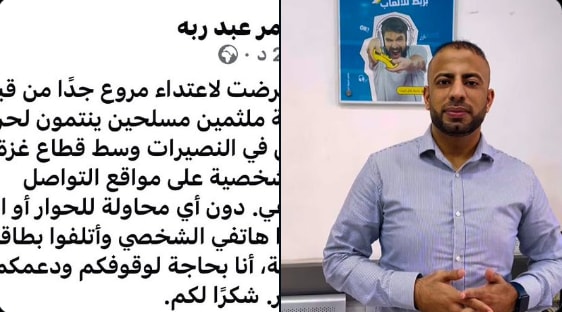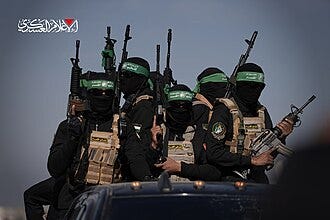Hamas Attacks Palestinian Journalist, International Press Remains Silent
The assault on Omar Abd Rabou is the latest in a string of Hamas atrocities against Gazans, including on those trying to get aid, which critics argue are not receiving the coverage they deserve.
A recent incident involving Gazan journalist Omar Abd Rabou has brought renewed attention to the challenges faced by reporters in the Gaza Strip under Hamas rule. According to reports on social media, Abd Rabou sustained severe injuries, including shattered legs, following an attack by Hamas terrorists who have threatened him repeatedly over the last several weeks according to individuals familiar with the incident.

Hamas Violence Against Journalists
Reports on the ground and from organizations monitoring freedom of the press indicate that journalists in Gaza often operate under significant pressure. The Committee to Protect Journalists (CPJ) has documented several cases in which Gazan reporters have faced threats, physical assaults, or forced silence by Hamas security forces.
For example, Tawfiq Abu Jarad, a correspondent for Sawt al-Hurriya radio station, was reportedly beaten and interrogated for hours by masked individuals in Rafah after covering mass marches critical of Hamas. Abu Jarad was released only after agreeing to cease his critical reporting, and his wife was reportedly threatened to deter her from participating in demonstrations. Such tactics appear to be part of a broader pattern, with journalists often accused of spying for Israel—a charge that has historically been used to justify harsh penalties.
The Palestinian Journalists’ Syndicate (PJS) has publicly condemned these acts of violence and intimidation. However, its capacity to protect journalists remains limited. In another documented case, freelance photographer Ibrahim Muhareb was reportedly beaten unconscious by armed men in plainclothes who identified themselves as members of the police investigations department.
Muhareb suffered serious head injuries and received no explanation for the assault. These assaults are not limited to journalists; civilians attempting to access humanitarian aid or participate in protests have also been targeted. Armed, masked Hamas terrorists have violently dispersed demonstrators and even executed those who dare to challenge the group’s authority, often labeling them “collaborators with Israel.” to justify their actions.
Silence in the International Media
International media coverage of these events has been sparse. The assault on Omar Abd Rabou is one example of a wider issue affecting journalists and activists in the region. International human rights organizations and press freedom advocates have called for greater scrutiny of Hamas’ actions, but these appeals have not resulted in sustained international attention. As a result, journalists and civilians in Gaza continue to face risks from multiple sources, without freedom of expression.
Despite these challenges, many journalists in Gaza persist in reporting on events in their communities. Their work highlights the complexities of operating in an environment where threats to safety and freedom of the press come at a great cost.





These attacks aren’t surprising. Matti Friedman worked for the AP more than a decade ago and saw this threat impact coverage on a regular basis.
Gift Link:
https://www.nytimes.com/2018/05/16/opinion/hamas-israel-media-protests.html?unlocked_article_code=1.OE8.EY_N.DrHjV7gKoifb&smid=nytcore-ios-share&referringSource=articleShare
***
It should also be remembered that October 7 mastermind Yahya Sinwar earned his “Butcher of Khan Yunis” nickname not by his violence against Israelis, but against his fellow Gazans.
There is a bloody reason local coverage out of Gaza is so biased. Reporters don’t want to end up in body bags.